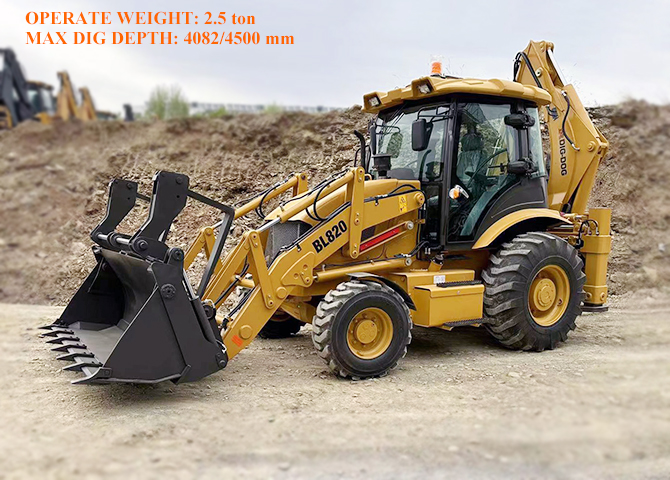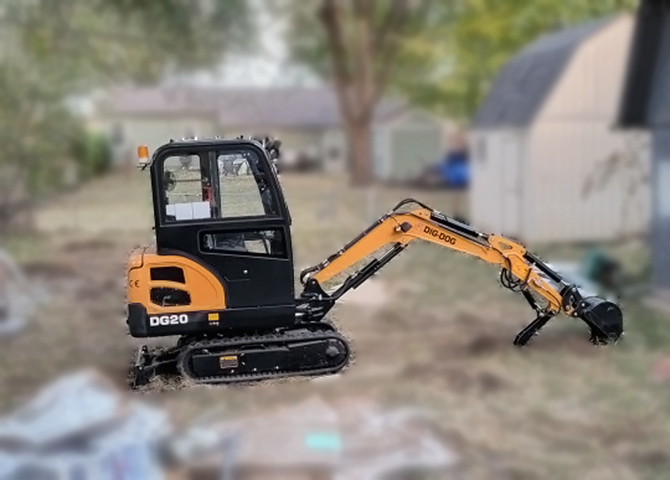A mini excavator or compact excavator is a large piece of equipment that is driven by a qualified worker. A mini excavator is used for small to medium-sized projects, such as demolition or digging jobs.

High quality and well-maintained mini excavator has an average maximum lifespan of 10,000 hours. Poor maintenance and heavy use can quickly reduce its life expectancy to about 8,000 hours.
In this post, you’ll learn the indicative signs that the track of your mini excavator is becoming worn, so you’ll have a better idea when’s the best time to schedule maintenance, undergo repair, and replace parts.
When the Rubber Track Snaps
At this point, you need to consider replacing your rubber track. Rubber tracks for mini excavators play a vital role in the proper functioning and overall operation of your equipment. Generally, it’s not advisable waiting for your rubber track to snap before replacing it.
While there are a lot of reasons why your track snaps, you can prevent it from happening by being aware of the signs of worn noted below:
Sprockets Skip Over the Lugs
Sprockets are the two gears in your track responsible for the track’s rotation. A worn out sprocket may cause your track to be loose. If the track becomes loose or your sprocket is worn, your track skips easily and be derailed.
Your Track Keeps Losing Tension
Like any rubber or steel products, your track stretches over time. That is why it’s important to check the tension every day or at least every few days. Lift the frame of the track off the ground and check the sag between the track roller (bottom) and the track lug (top).
Missing Lugs
Lugs tend to come out if the track gets damaged by large debris that is caught up under the carriage. It can also be caused by badly worn sprockets slipping against the lugs.
Both Tracks Won’t Move
Working in construction is challenging and becomes more difficult with a piece of malfunctioning equipment. If both of your tracks on your mini excavator won’t move, check the boom, the bucket, and the hydraulics. Also, inspect if you can hear the pump engaging when you move the lever and if the hoses twitch with locked tracks.
Try raising either side of your machine and check if the tracks will move. You can also try loosening the return hoses on one side to see if the final drive attempts to work. Another troubleshooting tip is removing the top hose from your mini excavator’s final drive and cap the line to test it.
Here are the possible reasons why your tracks won’t move:
Track brake doesn’t work.
Spool valves have some wires that have been tampered.
Fluid can’t travel smoothly through the final drives.
Broken wires.
Poor hydraulic flow.
No hydraulic flow on the drive motor.
Too Tight Tracks
The condition of your tracks can significantly affect the final drive motor performance. If your tracks are too tight, the increased friction weakens the final motor drive. It also holds the same with idlers and tracks rollers that are not in good condition. Before you conclude a problem with the final drive, it’s best to check the condition and tightness of your mini excavator tracks.
Cracks Appear on Track
Over time, you rubber track cracks because of frequent use, rough driving, scraping against curbs and walls, and working on tough terrains. Direct sunlight exposure when parking your mini excavator also hastens wear and tear.
Here’s a quick rubber track preventive maintenance guide:
If you’re working in a mini track loader, o reduce side wear on your rubber tracks, make a three-point turn whenever possible instead of swinging in a 180-degree arc. Learning how to properly operate a mini excavator can save you time, money, and effort with track repair and maintenance.
Replace undercarriage parts quickly if you notice signs of wear because chunks are pulled out with bad sprocket teeth and overused rollers can cut the rolling area.
 How To Choose The Right Compact Wheel Loader
How To Choose The Right Compact Wheel Loader
 How Much Does a Forklift Weigh?
How Much Does a Forklift Weigh?
 How Much Does a Backhoe Weigh
How Much Does a Backhoe Weigh
 How Much Does a Mini Excavator Weigh
How Much Does a Mini Excavator Weigh